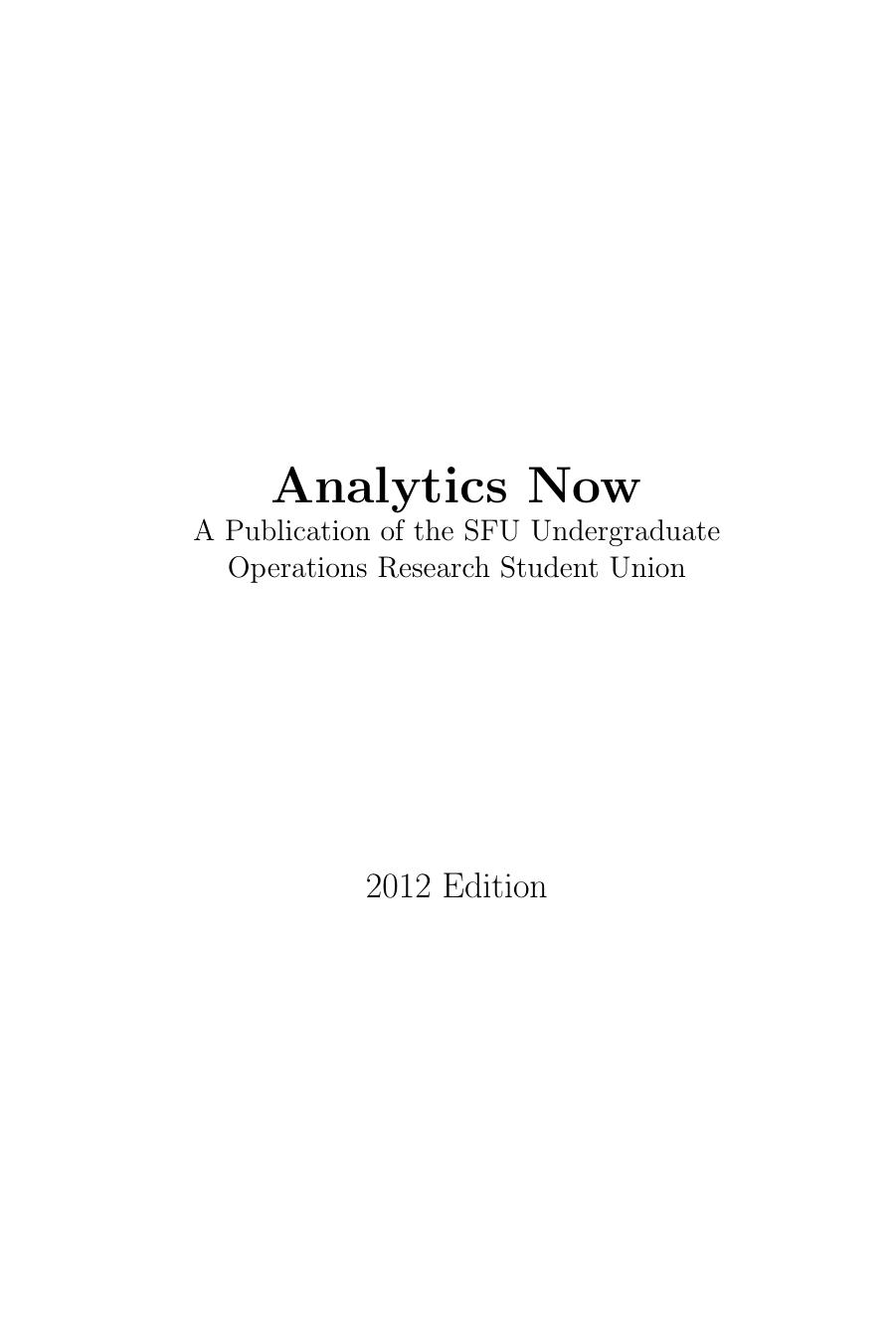Intersection Optimization Analysis: Cambie & W. Broadway, Vancouver
Résumé
The cross streets of W. Broadway and Cambie is one of the busiest intersections in the Vancouver Metropolitan area. Introducing a new traffic pattern, such as a diagonal crossing (“scramble crossing”), to improve pedestrian crossing efficiency can be “risky” considering the high traffic volume that the traffic corridor supports. The benefits from introducing a scramble crossing include the obvious shorter distance travelled by pedestrians when wanting to reach an opposite diagonal corner, and, given the right type of scramble crossing, a reduction of vehicle delays that are produced by walking pedestrians. Based on research and review of previous studies and methods, we constructed a mixed integer programming model to establish if the introduction of a scramble crossing at the chosen intersection would improve efficiency. Applying our model to the intersection of study generated positive results, allowing us to recommend that a scramble intersection be introduced based on our data.Références
Borgers, A., Timmermans, H. (1986). City center entry points, store location paterns and pedestrian rout choice behavior: a microlevel simulation model. Socio-Economic Plannig Sciences, 20, 25-31.
Bissessar, R., & Tonder, C. (2008). Pedestrian scramble crossing - A tale of two cities. City of Toronto. Retrieved from website: http://www.toronto.ca/transportation/walking/pdf/pedestrian_scramble_crossings.pdf
City of Vancouver, Engineering Services (2010, May 11). Traffic Management. Retrieved from website: http://vancouver.ca/engsvcs/transport/traffic/
City of Vancouver (2011, Aug 8). VanMap: Public edition. [Interactive Media]. Retrieved from website: http://vanmapp.vancouver.ca/pubvanmap_net/default.aspx
Gipps, P.G., Marksjo, B.(1985). A micro-simulation model for pedestrian flows. Mathematics and Computers in Simulation, 27(2), 95-105.
Kitazawa, K., Batty, M. (2004). Pedestrian behaviour modelling: an application to retail movements using a genetic algorithm. 7th International Conference on Design and Decision Support Systems in Architecture and Urban Planning. Retrieved from website: http://www.ddss.nl/
Koonce, P. (2008). Traffic Signal Timing Manual. Retrieved from website: http://www.signaltiming.com/The%20Signal%20Timing%20Manual_040108.pdf
Loxam, E. (2011, Dec 16). Vancouver considers scramble intersection. News1130. Retrieved from website: http://www.news1130.com
Mitchell, D.H., MacGregor Smithm J. (2001). Topological network design of pedesttrian networks. Transportation Research Part B, 35, 107-135.
Papadimitriou, E., Yannis, G., & Golias, J. (2009). A critical assessment of pedestrian behaviour models. Transportation Research Part F Traffic Psychology and Behaviour. Retrieved from website: http://linkinghub.elsevier.com/retrieve/pii/S1369847808001046
Schneider, R. (2011). Comparison of turning movement count data collection methods for a signaled optimization study. Retrieved from website: http://www.miovision.com/wp-content/uploads/URS_Whitepaper_May2011.pdf
Richard, M. (2008, Nov 11). Diagonal crosswalks in L.A. to make city more pedestrian-friendly [Photograph]. Retrieved from website: http://www.treehugger.com/cars/diagonal-crosswalks-in-la-to-make-city-more-pedestrian-friendly.html
Richard, M. (2011). Study on Pedestrian Signal Cycle Optimization. International Conference on Intelligent Computation Technology and Automation (ICICTA), 2011, pp. 515 - 519. doi: 10.1109/ICICTA.2011.142
Yang, Z. (2010). Signal timing optimization based on minimizing vehicle and pedestrian delay by genetic algorithm. (Master's thesis). Retrieved from website: http://www.ideals.illinois.edu
Téléchargements
Publié-e
Numéro
Rubrique
Licence
The images, figures, and tables in the Simon Fraser University Operations Research Undergraduate Journal are not necessary those of the Simon Fraser Student Society, Operations Research Union, or the Department of Mathematics at Simon Fraser University or their respective Directors and Executives. The copyright of all contributions remains with their authors. By submitting to Analytics Now, authors acknowledge that submissions reflect original work, and that proper credit has been given to outside sources.
All material herein is Copyright 2012 by the respective authors. Permission to reprint or reproduce the material contained herein is prohibited without express written permission from the author and publisher with the exception of dissemination for non-profit, educational, academic, or informative purposes.

